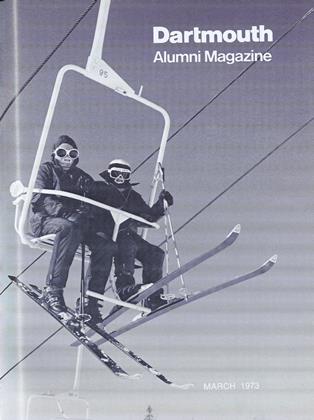Melvin Small '60 and J. David Singer. New York: JohnWiley & Sons, Inc., 1972. 419 pp. $15.95.
War, it is often said, is the second oldest profession. Yet it is one of the least studied and understood, though probably the most written about. Written history began with Herodotus' account of the Persian Wars, and most history down to the 19th Century chronicled wars and the deeds of warriors. But there was no theory of warfare until Clausewitz, no set of principles until Jomini, and no systematic description of war as a social phenomenon until the 1930's with the work of the sociologist Pitrim A. Sorokin (Social andCultural Dynamics), the political scientist Quincy Wright (A Study of War), and the British physicist Lewis F. Richardson (Statistics of Deadly Quarrels). What these men and their associates attempted to do in their pioneering studies was to seek a better understanding of the nature of war, especially its causes and consequences, through quantitative analysis of a large number of conflicts. In this way, they hoped it might be possible to control, eliminate, or find a less bloody substitute for war.
One of the problems of this approach is the difficulty of obtaining relevant, accurate, and comparable data on a large number of widely scattered conflicts, ranging in size from small guerrilla wars of brief duration to wars involving millions of soldiers and dozens of nations and lasting many years. To overcome this difficulty a "Correlates of War" project was established at the University of Michigan, utilizing the latest techniques and tools of the social sciences and financed by the Carnegie Corporation and the National Science Foundation. From time to time during the seven years since the establishment of the project. Professors Singer and Small have reported on their progress, but now, in this detailed and documented volume, they have given us the first full-scale report of their work. The result is impressive, providing a wide variety of data on war, including type (i.e., interstate, colonial, imperial), intensity or severity, magnitude, casualties, duration, participants, etc., on 93 separate conflicts in the 150 years since the Battle of Waterloo. It is a meticulous and carefully researched work, replete with tables and graphs, utilizing the capabilities of the computer as well as the literature on war. Appendices, notes, and bibliography add greatly to its value. If the path to peace lies in this direction, Messrs. Singer and Small will have made an important contribution.
The nationally known Dartmouth professor whospecializes in military history, Mr. Morton isDaniel Webster Professor and the author ofseveral volumes of the official history of WorldWar II, written as the U.S. Army's DeputyChief Historian.
 View Full Issue
View Full Issue
More From This Issue
-
 Feature
FeatureSailing Dreams and Random Thoughts
March 1973 By JAMES H. OLSTAD '70 -
 Feature
FeatureNotes Towards a "Whole Life Catalog"
March 1973 By ALAN T. GAYLORD, DIRECTOR -
 Feature
FeatureTHE ACRONYM SYNDROME
March 1973 By JAMES L. FARLEY '42 -
 Feature
FeatureFACULTY WOMEN
March 1973 -
 Feature
FeatureUNDERGRADUATE JOURNAL
March 1973 -
 Article
ArticleBrautigan's Search for Reality
March 1973 By RICHARD D. CARYOLTH '73
Louis Morton
-
 Feature
FeatureWAR AND HISTORY
FEBRUARY 1963 By LOUIS MORTON -
 Books
BooksTHE GETTYSBURG CAMPAIGN, A STUDY IN COMMAND.
DECEMBER 1968 By LOUIS MORTON -
 Books
BooksMILITARISM, U.S.A.
OCTOBER 1970 By Louis Morton -
 Books
BooksTHE AMERICAN CAMPAIGNS OF ROCHAMBEAU'S ARMY 1780, 1781, 1782, 1783. Vol. 1. THE JOURNALS OF CLERMONT-CREVECOEUR, VERGER, AND BERTHIER. Vol. 2. ITINERARIES AND MAPS AND VIEWS.
MARCH 1973 By Louis Morton -
 Books
BooksJUSTICE UNDER FIRE: A STUDY OF MILITARY LAW.
July 1974 By LOUIS MORTON
Books
-
 Books
Books"Quinze Contes Franjais,"
APRIL 1930 -
 Books
BooksTHE MAN WHO LIVES IN PARADISE.
May 1955 By CLIFF JORDAN '45 -
 Books
BooksTHE SWEET SCIENCE.
December 1956 By JAMES M. COX -
 Books
BooksAn Intriguing Account
NOVEMBER • 1985 By Mark Woodward '72 -
 Books
BooksA GIRL WHO WOULD BE QUEEN
December 1939 By MILDRED SAUNDERS -
 Books
BooksFACULTY PUBLICATIONS
June, 1922 By W. H. WOOD


